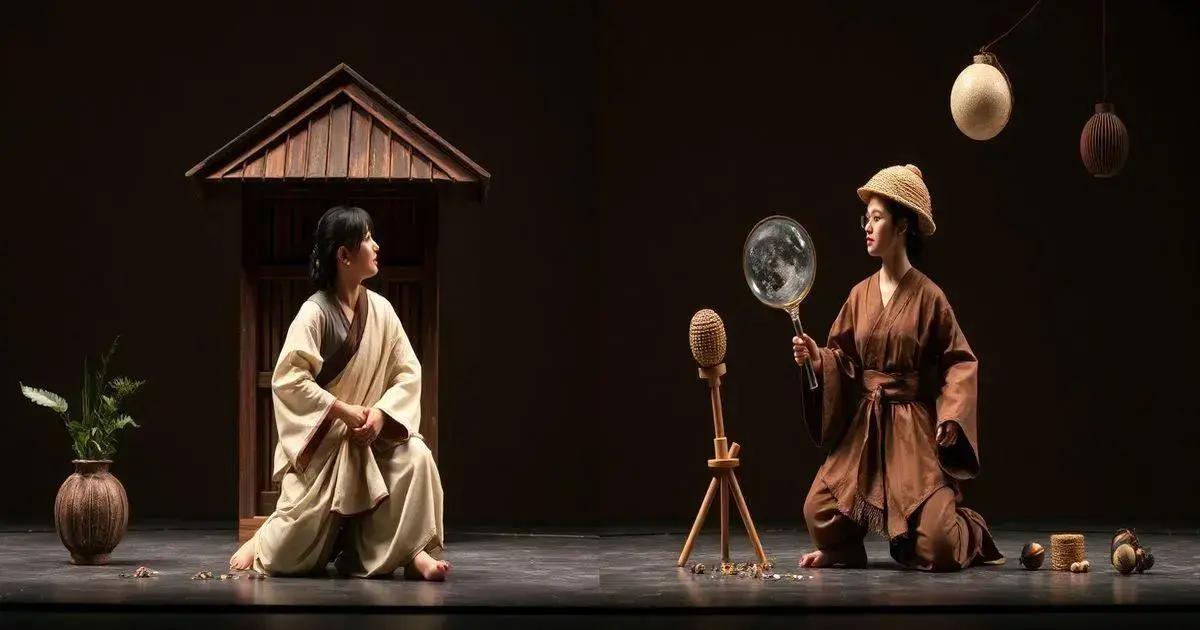The Arab Sheikh’s Trick is a mesmerizing performance art that combines natural and synthetic elements, showcasing cultural storytelling and illusion. By understanding its significance, audiences gain insights into Arab heritage while experiencing unique visual effects, making it a captivating spectacle in various settings like festivals and educational events.
The debate over whether the Arab Sheikh’s Trick is natural or synthetic has intrigued many. People wonder how this captivating phenomenon works and what it truly represents. In this blog post, we will delve into the origins of the trick, explore its implications, and discuss the complexities that surround it. Join us as we uncover the facts and differentiate between natural and synthetic aspects in our exploration.
Understanding the Arab Sheikh’s Trick

The Arab Sheikh’s Trick captivates audiences with its blend of mystery and skill. This trick often showcases fascinating techniques that leave spectators questioning the reality of what they see. By incorporating elements from the rich history and culture of the Arab world, this performance art combines tradition with creativity.
Historical Background
To understand the Arab Sheikh’s Trick, it’s important to explore its roots. This trick often draws inspiration from ancient practices that emphasize storytelling and illusion. The performances are both entertaining and educational, drawing the audience into a world where reality may bend.
The Art of Illusion
What makes the Arab Sheikh’s Trick truly special is the art of illusion. Skilled performers use a mix of sleight of hand, misdirection, and psychology to create an experience that feels real. The combination of traditions, custom gear, and expert technique elevates a simple trick into an unforgettable experience.
Importance of Performance
These tricks often serve more than just entertainment; they hold cultural and social significance. When performed at weddings, festivals, or public gatherings, they create a sense of community. Moreover, the mastery displayed by the performer reflects not only their skill but also a deep respect for their culture.
Understanding the Arab Sheikh’s Trick opens a window into a vibrant world of tradition and artistry. By appreciating the subtleties involved in its performance, audiences can gain a deeper appreciation for the ingenuity that defines this captivating phenomenon.
Natural vs. Synthetic: What’s the Difference?

When exploring whether the Arab Sheikh’s Trick is natural or synthetic, it is essential to define both terms. Natural refers to anything that occurs in nature or is derived from natural sources without human intervention. In the context of magical tricks, natural elements might include materials like sand, water, or fire that are used to create effects.
On the other hand, Synthetic refers to something that is man-made or artificially produced. This might include items like chemical compounds or specially designed props that enhance the illusion of the trick. Synthetic elements can be integrated into performances to create more dramatic or visually stunning effects.
Examples in the Arab Sheikh’s Trick
For instance, if the Arab Sheikh’s Trick involves producing a colored flame, achieving this might involve a synthetic chemical compound that produces vibrant colors not found naturally. In contrast, a simple trick using a natural item, like a raw fruit, could highlight the beauty of nature.
Consumer Perception
audiences may yearn for authenticity. Natural elements in a performer’s repertoire can evoke a sense of connection to tradition and heritage. In contrast, synthetic materials may be viewed as less genuine, even if they enhance the overall illusion.
Impact on Performance
The choice between natural and synthetic has implications for the performance quality as well. A trick relying on natural elements might feel more grounded and relatable, whereas one using synthetic components might allow for greater innovation and creativity. Understanding the balance between these elements can enhance how one perceives the Arab Sheikh’s Trick.
Real-life Applications of the Arab Sheikh’s Trick

The Arab Sheikh’s Trick has a variety of real-life applications that extend beyond mere entertainment. One major application is in cultural celebrations. During festivals and weddings, these tricks bring joy and wonder to guests, creating unforgettable memories.
Educational purposes also play a significant role. The techniques used in the tricks can be used to teach principles of physics, such as force and motion. By demonstrating these concepts through performance, educators can engage students in a fun and impactful way.
Magic and Entertainment Industry
Within the magic and entertainment industry, the Arab Sheikh’s Trick serves as an inspiration for aspiring performers. By studying the tricks, they can learn about illusion techniques and apply them in their own artistic expressions. This fosters creativity and encourages collaboration among performers.
Cultural Enrichment
In terms of cultural enrichment, these tricks help preserve and share Arab heritage with wider audiences. Many cultural institutions incorporate these performances into their programs, enabling people to engage with the art form and learn about its significance.
Tourism is another sector that benefits from the Arab Sheikh’s Trick. Travelers often seek authentic experiences, and shows featuring these tricks provide a unique glimpse into the local culture. This not only enhances the travel experience but also supports local economies.
By exploring real-life applications, the Arab Sheikh’s Trick proves to be more than just a spectacle; it weaves together threads of education, culture, and entertainment, enriching both performers and audiences alike.
Expert Opinions on the Nature of the Trick

Experts have varying opinions on the nature of the Arab Sheikh’s Trick. Many agree that this trick combines both natural and synthetic elements to create a mesmerizing experience. Dr. Ahmed Jalal, a cultural historian, believes that the trick reflects the rich traditions of Arab storytelling, which often includes elements of illusion and skill. He emphasizes the importance of natural materials like sand and water, which highlight the beauty of the desert landscape.
On the other hand, Magician Samir Nasser points out that the use of synthetic props can enhance the visual impact of the performance. He argues that synthetic elements allow performers to achieve effects that would be impossible with natural materials alone. “Modern technology,” he states, “adds a layer of creativity that keeps the audience engaged.”
Balancing Tradition and Innovation
Experts also discuss the need to balance tradition with innovation. Cultural analyst Lily Faris suggests that performers should respect the heritage while not being afraid to incorporate new methods. This bridge between old and new can enrich the performance, attracting larger audiences.
Audience Perception
Another important aspect considered is audience perception. Dr. Saif Malik, a psychologist, explores how viewers perceive authenticity. “People tend to feel more connected to performances that use natural elements,” he explains. However, he acknowledges that well-executed synthetic tricks also hold allure, but may feel less personal.
Gathering different expert opinions on the nature of the Arab Sheikh’s Trick shows the intricate layers involved in its performance. By understanding their insights, audiences can appreciate the complexities that shape this fascinating art form.
Exploring the Fascination with the Arab Sheikh’s Trick
The Arab Sheikh’s Trick captivates not just through its stunning visuals but also through its deep cultural significance. By blending both natural and synthetic elements, this trick creates a unique spectacle that has sparked curiosity and discussion among audiences and experts alike.
As we’ve seen, the trick holds a mirror to Arab traditions, while also paving the way for modern innovation in performance art. Understanding the various applications of these tricks—from cultural celebrations to educational engagements—reveals their multifaceted nature and impact.
Experts highlight the importance of balancing tradition and modernity, proving that the trick is much more than an illusion; it is an art form that enriches and connects communities. Ultimately, the Arab Sheikh’s Trick stands as a testament to the creativity and ingenuity that continues to inspire performers around the world.
FAQ – Frequently Asked Questions about the Arab Sheikh’s Trick
What is the Arab Sheikh’s Trick?
The Arab Sheikh’s Trick is a captivating performance that blends elements of magic and cultural storytelling, often incorporating natural and synthetic materials.
How does the trick use natural elements?
Natural elements like sand, water, and fire are often used to highlight the beauty of nature and enhance the authenticity of the performance.
What role do synthetic materials play in the trick?
Synthetic materials can create more dramatic visual effects and allow performers to achieve illusions that may not be possible with only natural items.
Why is it important to understand the cultural significance of the trick?
Understanding the cultural significance helps audiences appreciate the tradition and artistry involved, enriching their experience during performances.
In what settings is the Arab Sheikh’s Trick commonly performed?
This trick is commonly performed at cultural festivals, weddings, and educational events, showcasing its versatility and appeal.
How do experts view the balance between tradition and innovation in the trick?
Experts emphasize the importance of balancing traditional elements with innovative techniques to keep performances relevant and engaging.












